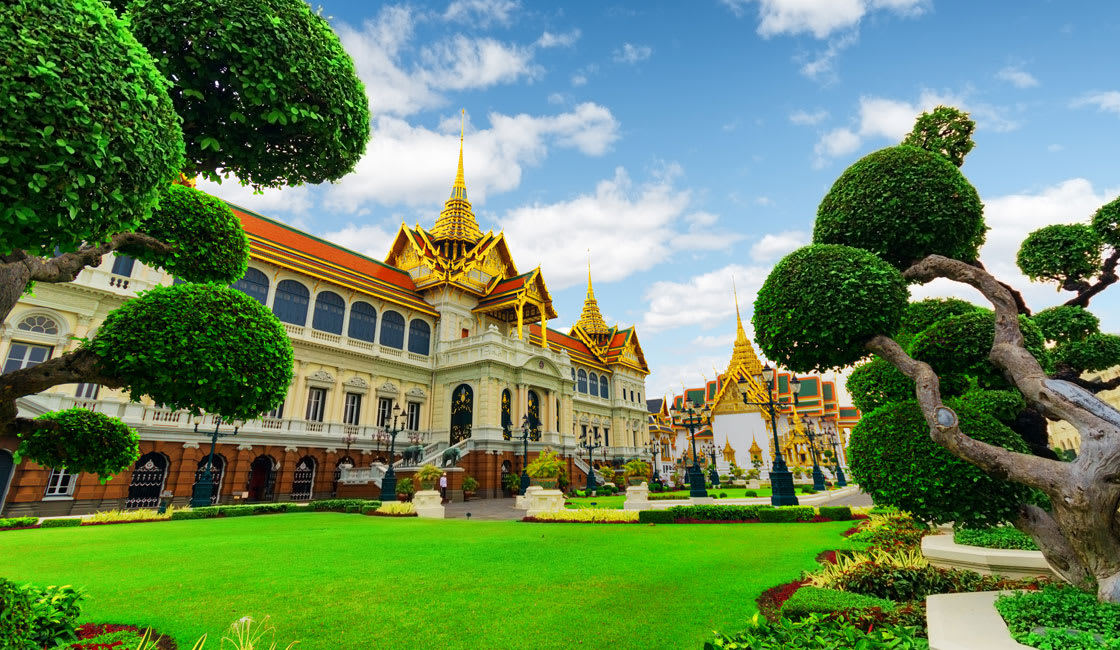
It’s no surprise amazing Thailand is one of the world’s top travel destinations and Southeast Asia’s long-established tourism megastar. From historical sites and powdery white beaches to vibrant markets and glittering Buddhist wats (temples), Thailand tourist attractions are so diverse, you’ll be spoilt for choice when planning your trip here. To help matters, here’s our recommended list of what to see in Thailand.
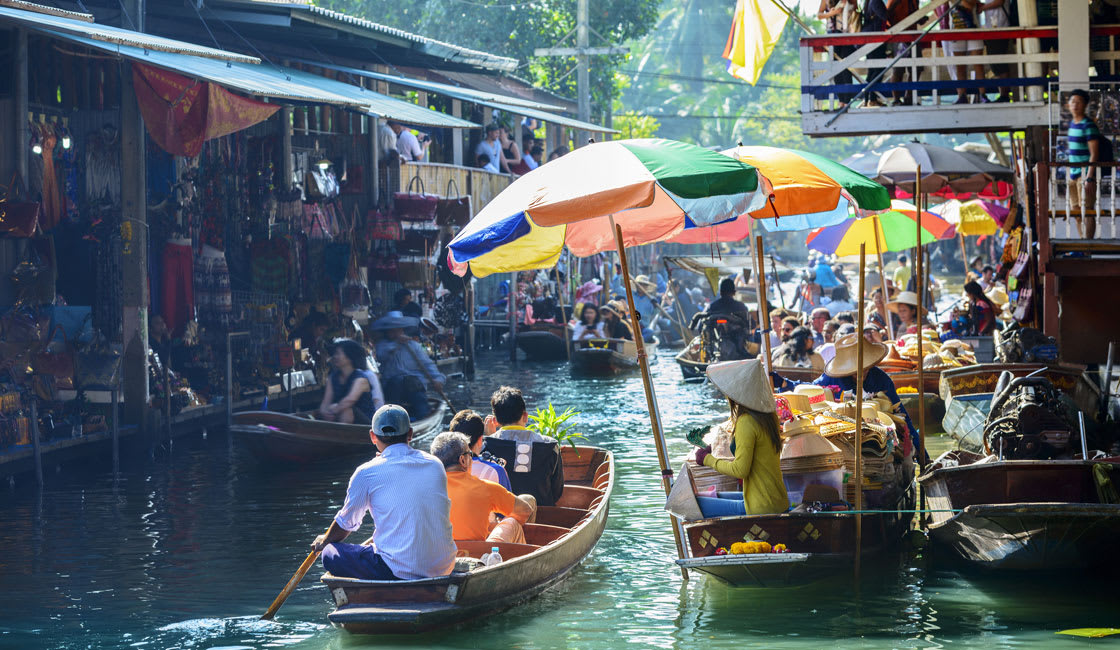
If there’s one must-see sight in Bangkok, it has to be the magnificent Grand Palace, the capital’s most famous landmark and one of the world’s most frequented tourist attractions, welcoming around eight million tourists annually! From 1782 to 1925, the Grand Palace was the official residence of the Kings of Siam and later, Thailand, with the royal court and administrative seat of government all based here.
Today, partially open to the public, the Grand Palace and its spectacular compound remains the spiritual heart of the Thai Kingdom, used for hosting royal ceremonies and official events. Staggering in both historical significance, magnitude and exquisite craftsmanship, the 100-plus impressive buildings here include ornate royal halls, temples and pavilions, set around lavish gardens and stately courtyards.
The highlight is stunning Wat Phra Kaew, or Emerald Buddha Temple, Thailand’s most sacred Buddhist site, housing a highly-revered Emerald Buddha image carved from a single block of jade, dating back 700 years. Once dark, the illuminated Grand Palace looks especially captivating.
Bangkok’s numerous floating markets have long been among the city’s star attractions. Although nowadays most function as tourist magnets and community gathering places, rather than vital components of local economies, they still present a visual feast for the senses and immersion into a Thai traditional way of life, when Bangkok was known as the ‘Venice of the East.’ Floating markets also offer visitors a fun way to shop and eat, while interacting with locals, plus a chance to explore the network of canals (khlongs) and stilt-house communities.
Best explored on an early morning guided tour, most of Bangkok’s floating markets are located outside the city center. Onboard longtail boats, glide alongside colorful wooden vessels piled high with goods, including exotic tropical fruits and grab tasty Thai snacks from floating kitchens– all revealing fantastic photographic opportunities. Damnoen Saduak is the most popular and liveliest floating market, southwest of Bangkok in Ratchaburi, but for a more authentic local flavor, head to Amphawa Floating Market in Samut Songkhram, or the lesser-known and smaller Taling Chan, just seven miles from downtown Bangkok.
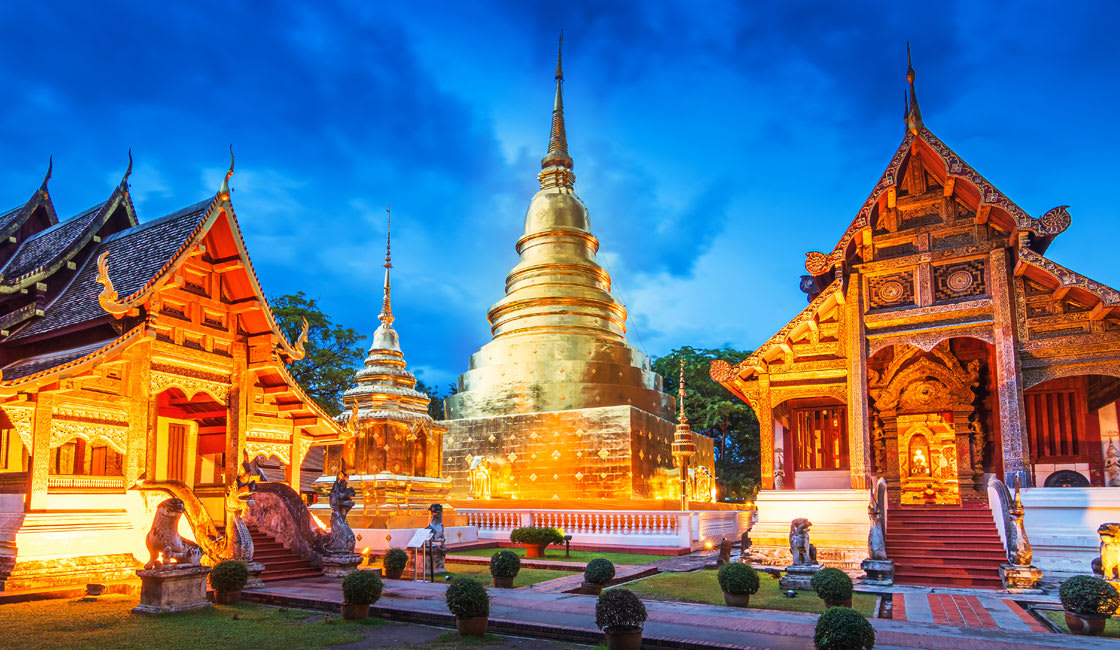
Nestled in Thailand’s mountainous north, Chiang Mai is a popular tourist hotspot for many reasons – one of which is its multitude of historic Buddhist wats (temples). Your absolute must-see temple, however, is Wat Phra That Doi Suthep, which rests atop Doi Suthep Mountain, a dominating presence on Chiang Mai’s horizon.
Not only is Wat Phra That Doi Suthep an important and symbolic city landmark and an impressive embodiment of the ancient Lanna kingdom, but is one of Thailand’s holiest Buddhist sites, with huge historical and spiritual significance. Precisely why a large number of visitors, including devout pilgrims, flock to this jaw-dropping temple. To get there, you’ll have to climb the 300 or so steep steps up to the summit of Doi Suthep Mountain – alternatively, the easy option cable car.
Once at the top, admire the intricately decorated temple, crowned with a 79-feet- tall, gilded Chedi (Thai-style stupa) that blazes like a beacon in the sun and panoramic views of the surrounding countryside and Chiang Mai, spread out below.
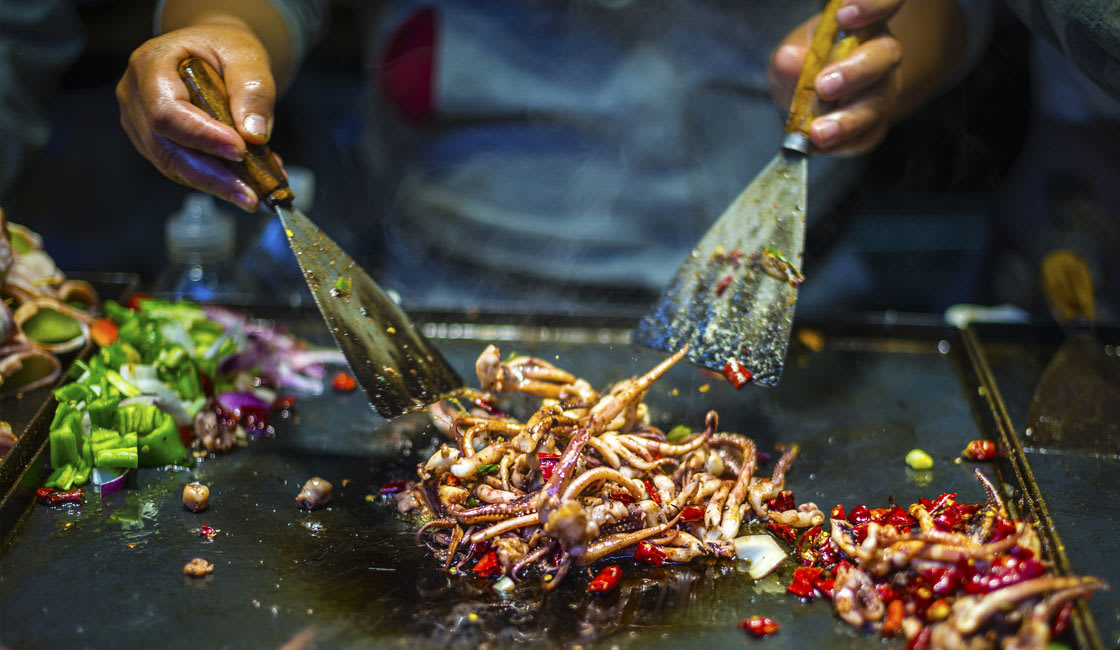
Night markets and bazaars are also a big attraction in Chiang Mai and an essential Thai travel experience, offering a more interesting retail experience than elsewhere in the country. Many market stalls specialise in authentic handicrafts, silverware, ethnic attire and souvenirs, hand-made by the local hill tribes and distinctive of this northern region. You also get the chance to sample cheap and tasty northern Thai delicacies (some of the nation’s best) and soak up the buzzy, carnival-like atmosphere.
Chiang Mai boasts a diverse collection of night markets, spread across town, but the most famous is Sunday Walking Street (Sunday evenings), running through a temporary pedestrianized street in the Old City. Here, hundreds of stalls sell anything from hand-dyed textiles to essential oils and street food, but there are even makeshift bars and massage zones!
One of Thailand’s oldest and best known is Chiang Mai Night Bazaar, while the Saturday Wualai Walking Street Market offers a smaller, less crowded alternative. Wherever, be sure to barter for a bargain!
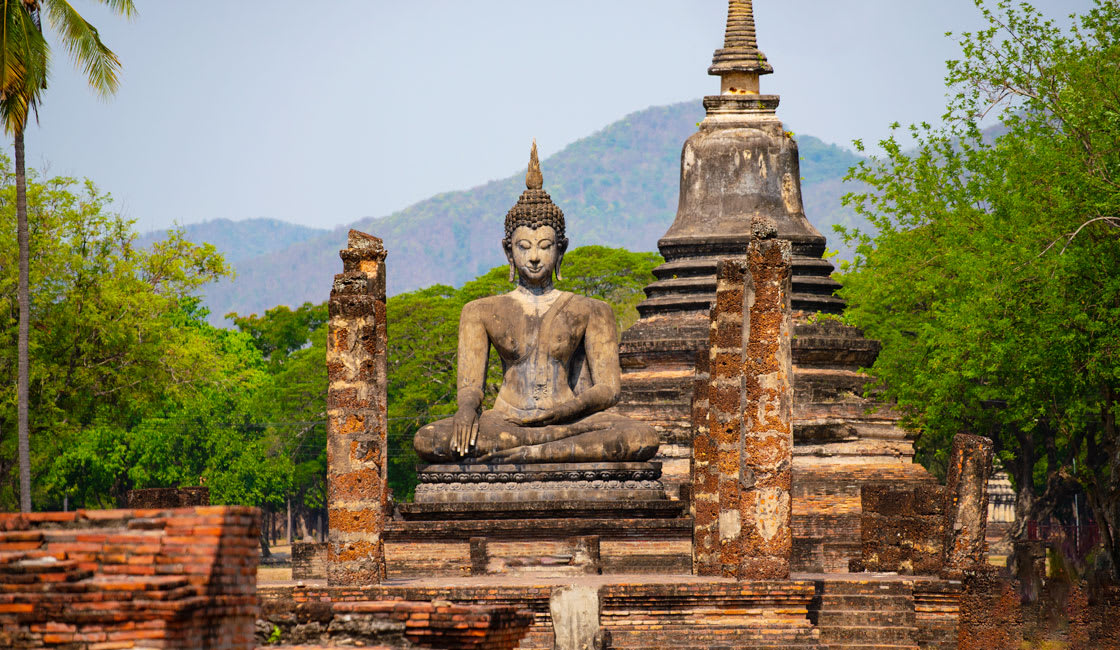
Located in north-central Thailand, just outside the modern-day city of the same name, Sukhothai Old City is the ancient capital of the first Siamese Kingdom and birthplace of Thai art, architecture and language. During its golden era, around the 13th and 14th centuries, Sukhothai even rivalled the mighty Khmer Angkor empire.
Even though it ranks as one of Thailand’s most significant historical sites, Sukhothai (literally meaning ‘Dawn of Happiness,’) still attracts a smaller number of visitors than its better-known counterpart, Ayutthaya, but is well worth a visit and can be leisurely explored by bicycle. Contained within a magnificent World Heritage Historical Park and imposing city walls are hundreds of ancient ruins covering a royal palace, Buddhist temples, stupas, imposing statues and monuments, interspersed with water features.
Don’t miss the most impressive temple, Wat Mahathat, built to house sacred Buddha relics and regarded as the spiritual center of Sukhothai Kingdom – where nine massive stupas and two towering Buddha images are revealed.
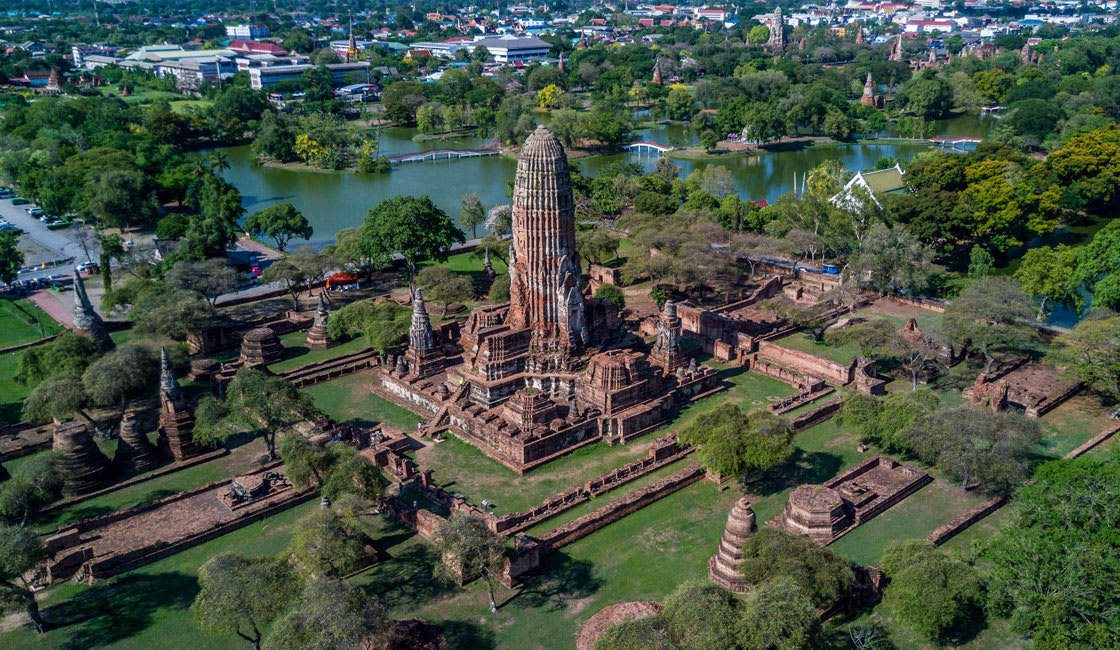
For history buffs alike, Ayutthaya, the second capital of Old Siam, offers a fascinating peek into the glory days of a once mighty Siamese Kingdom that dates back to the 14th century. Once one of Asia’s most powerful cities, Ayutthaya was a flourishing center for regional trade where art and culture merged and by the early 18th century, was one of the world’s largest cities with an estimated one million inhabitants.
After the city was destroyed by the invading Burmese army in 1767, the Kingdom however collapsed soon after. Nowadays, Ayutthaya is contained within a World Heritage-listed Historical Park, which sprawls across an island surrounded by three rivers and deep moats and ranks as one off Thailand’s must-see archaeological gems and one of Asia’s most impressive city ruins.
Step back in time, exploring Ayutthaya’s crumbling yet magnificently restored Buddhist temples and statues, royal palaces, monasteries, towers and chedis, displaying an eclectic array of architectural styles. Stunning highlights feature a 39-foot-long reclining Buddha and iconic Buddha head entwined by overgrown tree roots. Arriving by boat from Bangkok – an hour’s drive south– is a popular day trip and pleasant river voyage.

Thailand boasts many beautiful national parks, but your must-see is Khao Yai National Park – and not just because of its relative proximity to Bangkok. The first official national park established in Thailand and now its third largest, stunning Khao Yai is a World Heritage Site considered one of Asia’s largest intact monsoon forests. Stretching across four central provinces, Khao Yai has it all: mountains, lakes, rainforest, grasslands, diverse wildlife and birds, including black bears and hornbills, plus thousands of plant species.
Some of the 30-plus miles of hiking lead to breathtaking waterfalls, including the famed Haew Narok falls. A haven for both nature and adventure lovers brimming with activity options, camping out overnight is also possible at lodges and camp sites. The ultimate drawcard however is the large population of Asian elephants and a rare opportunity to see these revered creatures wild in their natural environment.
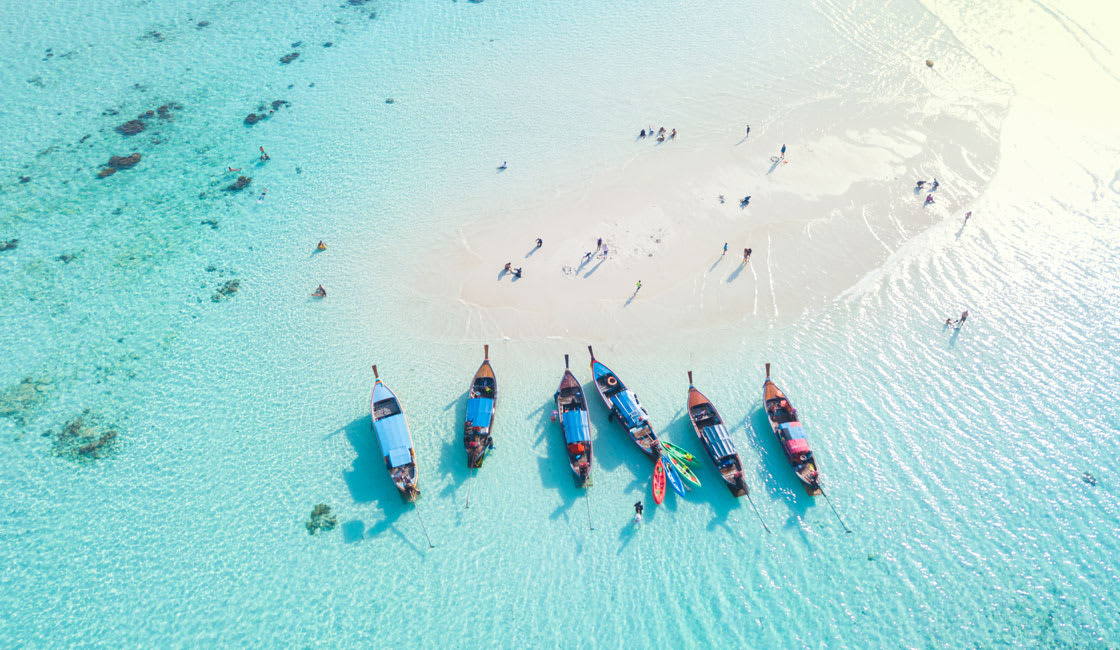
Many visitors travel to Thailand simply because of the beautiful beaches here. Not only does Thailand have a never-ending number, along 5,000-plus miles of coastline and on a multitude of tropical islands, but many are regarded as the world’s finest: think powdery white sands, edged by swaying palm trees and lapped by clear turquoise water teeming with colorful fish and corals. In fact, Thailand boasts so many world-class beaches, there are too many to list and as these may attract a different type of visitor – from families to honeymooners – it can all get subjective.
Generally speaking, Thailand’s best beach stunners are found in the south, in two prime tourist areas to the east and west; a beachgoer’s paradise with not just some of the most beautiful in Asia, but on the planet, combined with excellent facilities, services and resorts – why millions of tourists flock here.
In the west and Andaman Sea, Thailand’s largest island, Phuket, is regarded as one of the world’s top beach destinations, with at least 30 gorgeous beaches to choose from, while nearby Krabi presents another ultimate tropical getaway with spectacular Railay Beach and Koh Phi Phi’s Maya Bay, its most famous beaches of all. In the east and Gulf of Thailand, a trio of sensational islands, Koh Samui , Koh Phan Ngan and Koh Tao have lured travelers for years with their gorgeous jungle-fringed beaches.
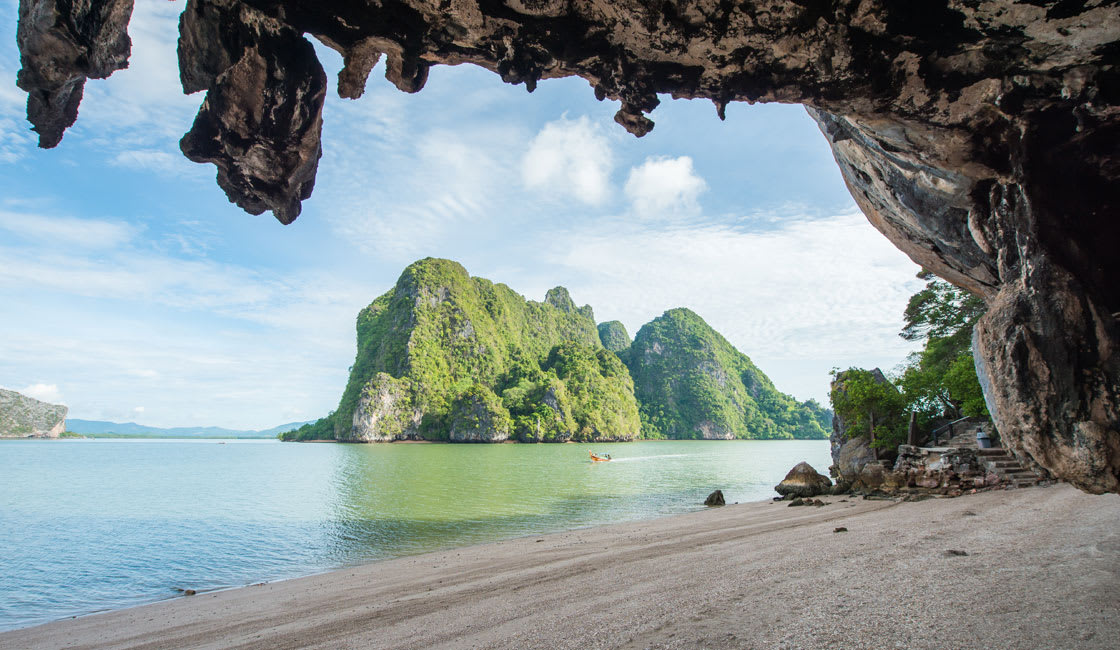
Also located in the Andaman Sea, Phang Nga Bay needs a special shout-out as one of Thailand’s top tourist attractions, a unique natural wonder matched only in similarity by Vietnam’s Halong Bay. Wondrous Phang Nga Bay is distinctive for its sheer limestone karst islets and towering cliffs that jut out of the emerald-green water, many of which are peculiar-shaped and uninhabited and revealing hidden coves, caves and aquatic grottoes.
Protected by a marine national park, with calm, shallow waters and clear conditions, this stunning bay is perfect for boating; the ideal way to savor the jaw-dropping scenery is on a leisurely day trip onboard a traditional longtail boat, speedboat, or chartered yacht. Leisurely glide amongst limestone karsts, but especially, the bay’s iconic Koh Ta-pu (‘Nail Island’ in Thai), better-known as ‘James Bond Island,’ after featuring in the James Bond movie, The Man with the Golden Gun.
This signature, top-heavy pinnacle is a much-photographed attraction, as is, the surrounding ethereal water world. The more adventurous should opt for sea kayaking, paddling deep into hidden ‘hongs’ – collapsed cave systems open to the sky.
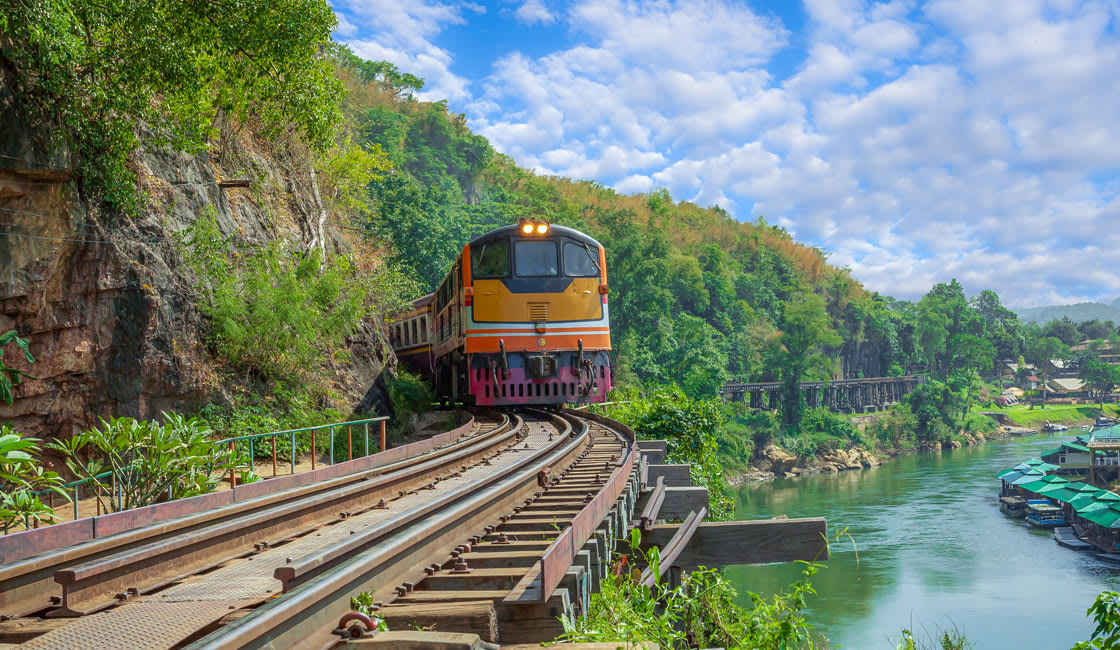
In Thailand’s western regions, Kanchanaburi is synonymous with the infamous ‘Bridge over the River Kwai’ and Thai-Burmese ‘Death Railway,’ built by Allied Prisoners of War during World War II. Connecting Burma to Thailand and of great strategic importance to the Japanese, this Death Railway is so-named due to the thousands of men who died in unimaginably harsh conditions during its construction.
Although a chilling spot, Kanchanaburi’s controversial structures are essential on any Thailand itinerary. Despite repeated bombings, the bridge still stands today, but most of the railway line was eventually abandoned and only a portion of it remains in operation. Nowadays, it’s possible to walk across the bridge or travel over it on a local train from Kanchanaburi, over the River Kwai, to Nam Tok. Ironically, the slow, two-hour train ride along this Death Railway is one of Thailand’s most scenic and popular, but the haunting history makes this journey special.
Don’t miss visiting some of Kanchanaburi’ World War II historic sites and excellent museums commemorating the tragic events that unfolded here; these include the Thailand-Burma Railway Center, World War II Museum and JEATH War Museum. Afterwards, stroll through the well-maintained Kanchanaburi War Cemetery, final resting place of nearly 7,000 Allied Prisoners of War.
While Rainforest Cruises aim to provide accurate and up-to-date information, we make no representations as to the accuracy or completeness of any information herein or found by following any link on this site. Rainforest Cruises cannot and will not accept responsibility for any omissions or inaccuracies, or for any consequences arising therefrom, including any losses, injuries, or damages resulting from the display or use of this information.




